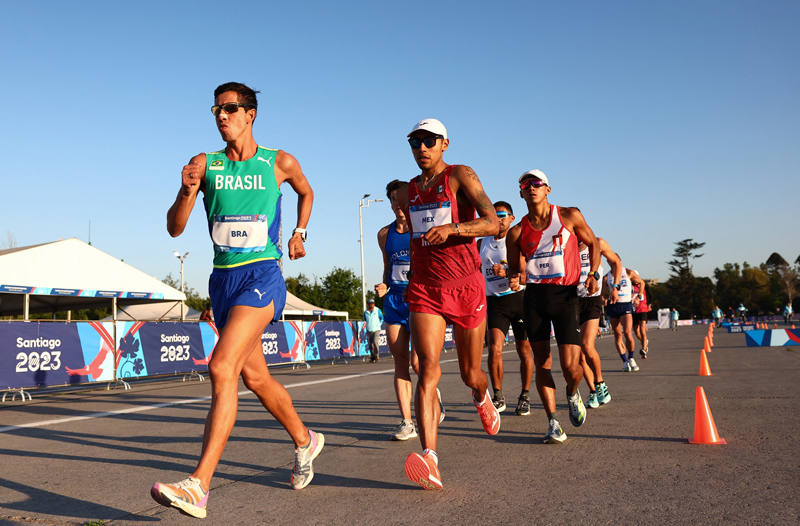Weight management: does meal timing really matter?

In most sports, the loss of excess fat isn’t just aesthetic, it almost always produces enhanced performance. When excess weight is shed, not only is power-to-weight ratio (the amount of power available to each kilo of bodyweight, which is a fundamental determinant of performance – see this article) improved, there are other benefits too. These include increased agility, and a reduced injury risk through reduced impact loading, especially in weight bearing sports such as running.
Routes to leanness
The perennial question for athletes of course is how best to shed those excess pounds and keep them off without resorting to ridiculous diets or training schedules, both of which can lead to loss muscle tissue, reduced strength and power, increased risk of injury, and even illness. The go-to method recommended by most dieticians is the use of mild calorie restriction, over an extended time period(1,2) Whilst this is an efficacious route in the general population, it can be more difficult for athletes to implement, who generally need significantly more calories than their sedentary counterparts in order to fuel training.
In addition to longer-term mild calorie restriction, there are a number of other strategies known to help lose and control weight. These include intermittent fasting, which has been shown to be equally as effective for weight loss as conventional calorie controlled diets(3). Indeed, the most recent evidence is that intermittent fasting may be even more effective than continuous calorie control(4). A variation on this is ‘alternate day fasting’, which has also been demonstrated to be an effective route to weight loss and improved body composition(5), while yet another method for which robust evidence exists is the use of meal-replacement drinks to replace the main meal of the day(6).
What works for athletes?
While the above strategies for weight reduction and management can work well in the general population, they may struggle to fulfil the needs of athletes. The athlete’s nutritional requirements (including calorie intake) are driven by training and recovery needs. Performing a fast or restricting calorie intake in the hours or day following a training session or competition is a potential recipe for disaster because these are the very times athletes need to replenish muscles with glycogen (carbohydrate) and consume adequate protein for muscle tissue repair and growth (see this article on the fundamentals of nutrition and recovery). In short, the training and competition you perform should direct your nutritional habits, not the other way round!
Time-restricted feeding
One possible way around this conundrum is a strategy known as ‘time –restricted feeding’ or TRF for short. The idea of TRF is that instead of eating freely throughout the day, meals and calories are consumed within a relatively narrow time interval each day of around eight hours (see figure 1). A key point however is that TRF does not involve a restriction in the number of calories or amount of protein and carbohydrate consumed. It only affects the time window in which the normal calorie intake is consumed.
Why could TRF help with weight management and reductions in body fat? The theory is related to the ‘thrifty gene’ effect. This effect arises because over hundreds of millennia, humans have evolved to switch on fat-burning genes (for energy and survival) when food is scarce. Our ancient hunter-gatherer ancestors would not have had 24/7 access to copious food quantities; there would have been regular periods when food was not available. The ability to efficiently oxidise fat stores for energy was therefore paramount. The reasoning behind TRF is that by ensuring there are reasonably long periods (18+ hours) in the day when no food is available to the body, it increases the activity of these thrifty genes (which we still have in our DNA). The consequence is that fat burning genes are upregulated and more energy during exercise is available from fat stores in the body.
Figure 1: Time–restricted feeding (24-hour clock)
You need to be logged in to continue reading.
Please register for limited access or take a 30-day risk-free trial of Sports Performance Bulletin to experience the full benefits of a subscription. TAKE A RISK-FREE TRIAL
TAKE A RISK-FREE TRIAL
Newsletter Sign Up
Testimonials
Dr. Alexandra Fandetti-Robin, Back & Body Chiropractic
Elspeth Cowell MSCh DpodM SRCh HCPC reg
William Hunter, Nuffield Health
Newsletter Sign Up
Coaches Testimonials
Dr. Alexandra Fandetti-Robin, Back & Body Chiropractic
Elspeth Cowell MSCh DpodM SRCh HCPC reg
William Hunter, Nuffield Health
Keep up with latest sports science research and apply it to maximize performance
Today you have the chance to join a group of athletes, and sports coaches/trainers who all have something special in common...
They use the latest research to improve performance for themselves and their clients - both athletes and sports teams - with help from global specialists in the fields of sports science, sports medicine and sports psychology.
They do this by reading Sports Performance Bulletin, an easy-to-digest but serious-minded journal dedicated to high performance sports. SPB offers a wealth of information and insight into the latest research, in an easily-accessible and understood format, along with a wealth of practical recommendations.
*includes 3 coaching manuals
Get Inspired
All the latest techniques and approaches
Sports Performance Bulletin helps dedicated endurance athletes improve their performance. Sense-checking the latest sports science research, and sourcing evidence and case studies to support findings, Sports Performance Bulletin turns proven insights into easily digestible practical advice. Supporting athletes, coaches and professionals who wish to ensure their guidance and programmes are kept right up to date and based on credible science.









